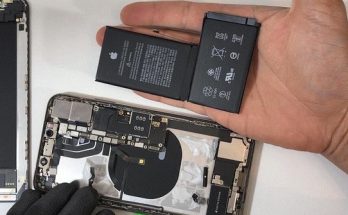
Fiber-Splice-Cassettes
Fiber splice cassettes simplify installation, speed up field splicing and provide cable management within the housing. Each 12 fiber splice cassette comes preloaded with 12 singlemode color coded LC pigtails and includes a loaded adapter panel, splice tray, splice holder, sleeve protectors and heat shrinks.
They can also include additional fiber management elements such as bend radius protection, routing pathways and strain relief mechanisms. They are typically compact and can be mounted on a wall.
Advantages
As telecommunications technology advances, the demand for faster and more reliable internet and communications connections continues to grow. This demand has led to the development of fiber-to-the-home (FTTH) networks, which deliver lightning-fast internet directly to homes and businesses. Fiber-splice cassettes are a vital component in these networks, providing a secure and organized way to manage fiber optic splices while ensuring efficient connectivity and long-term reliability.
Until the introduction of splice cassettes, pigtailed optical fiber termination was often difficult and labor-intensive. It required separate hardware for splicing and termination, an extensive bill of materials, and time-consuming routing between splice and termination housings. The emergence of the splice cassette has caused a dramatic shift in optical fiber termination methods, with splice cassettes leading the pack as the preferred field-termination method.
Splice cassettes offer many advantages over traditional splice trays, including space-saving design and easy access to splices for maintenance and troubleshooting purposes. They also offer various fiber management features, such as routing pathways and strain relief mechanisms. This makes them ideal for use in a variety of applications, including outside plant, central office, distributed antenna systems, and data centers.
Additionally, splice cassettes have lower back reflection than connectors, making them a more cost-effective solution for establishing long-range transmission networks. They also provide a more reliable connection than connectors, as they are designed to prevent modal power interference, which can cause severe loss in fiber connections when two or more splices occur within close proximity of each other.
Space-saving design
A splice cassette is a space-saving solution for storing splice sleeves and slack fiber, while also protecting them from dust, moisture and other environmental elements. This ensures the spliced fibers are safe and protected for years to come, delivering consistent and reliable performance. It also allows technicians to work more quickly, which can save time and money on labor costs.
Splice cassettes are an effective alternative to connectorized pigtails, which require a long stub that must be fused to the field fiber with a splice chip or splice cabinet. Connectorized pigtails also require more space in a splice tray, which can be an issue for high-density applications. fiber-splice-cassettes Splice-on connectors (SOC) eliminate these issues by incorporating a short stub and eliminating the need for a separate splice protection sleeve.
OCC’s splice cassettes are a flexible, versatile, and scalable part of our Enterprise Solution. They are compatible with a range of cable applications and can be easily installed in telecommunication closets, distribution frames, and other enclosures. The cassettes feature a patented double-sided access that holds up to 12 splice sleeves and a populated adapter plate. They also have a clear cover that makes it easy for technicians to visually inspect the splices, while still maintaining a watertight seal.
Our splice cassettes are preloaded and prerouted for quick fusion splicing with either single or ribbon fiber pigtails, which can be inserted into the sleeve cradles from either side of the housing. They also have color-coded 250 micron splice sleeves to help technicians identify the correct position. This makes them an excellent choice for dynamic, ever-changing data center and enterprise networks that need to accommodate Moves, Adds and Changes.
Easy to access
A fiber splice cassette is a device used in fiber networks to accommodate and organize optical fibers in a secure and organized manner. It consists of a plastic or metal housing with trays or slots where the spliced fibers can be placed. The splice cassette also has built-in fiber management elements like routing pathways and strain relief mechanisms.
Compared to splice trays, splice cassettes are easier to access and allow technicians to easily make repairs or changes. This is because splice cassettes have an enclosing cover that protects the spliced fibers from dust and debris. In addition, most splice cassettes are designed to fit different cable applications, including tight buffered cables, loose tube and ribbon.
Another advantage of splice cassettes is that they are more compact than traditional splice trays. This allows them to save space in the interconnect panel, which can result in significant cost savings. They also have a clear cover that allows technicians to visually inspect the contents.
Clearfield’s fiber-splice cassettes are a five component toolless system consisting of a top cover, splice tray, splice chip, buffer tube/ribbon slack storage and cable assembly tray. The system snaps together to support patch and splice (Clearfield’s in-cassette splicing solution), patch only, or plug-and-play configurations in any network environment. In addition, a dual high 24 port expansion cassette is available to double the splice capacity in the same footprint.
Pre-terminated or pre-connectorized fiber pigtails
Pre-terminated fiber pigtails are available in a wide range of connector types and lengths, making them versatile for a variety of applications. They can also reduce installation time and complexity by eliminating the need for splicing on-site. Additionally, pre-terminated fiber pigtails often come with adapters or connectors installed on one end, which allows for easy connection to other devices.
The most common type of pigtail is a single, tight-buffered optical fiber with a connector on one end and a length of exposed optical fiber on the other. The connectorized end face is typically polished to minimize reflections, which can interfere with optical power loss in a system. A pre-terminated pigtail is a good choice for high-speed digital and analog video systems, as well as other applications requiring precision optical alignment.
When compared to field hdmi-active-optical-cable-aoc terminations, pre-terminated or pre-connectorized fiber pigtails can reduce installation times and labor costs, and provide more accurate results. They are also easier to troubleshoot and maintain, reducing the likelihood of network problems.
A fiber splice cassette is a compact housing that contains multiple splice trays or modules, which hold and secure individual splices. The splice cassettes have hinged or sliding covers that allow technicians to easily access the splices for maintenance and troubleshooting. The splice trays or modules are designed for use with both single-mode and multimode fiber, and they can accommodate up to 24 fibers in a single cassette.


